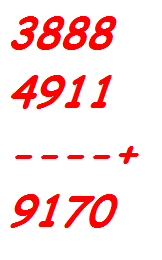 Back in London, Inspector Simon Mart of Scotland Yard looked at the interrogation reports before him. All three were known criminals, and now suspected of a VST, a Very Serious Theft. In fact, nothing less than the miniature of the royal train carriage had been stolen from the Toy Museum.
Back in London, Inspector Simon Mart of Scotland Yard looked at the interrogation reports before him. All three were known criminals, and now suspected of a VST, a Very Serious Theft. In fact, nothing less than the miniature of the royal train carriage had been stolen from the Toy Museum.
It had already been proved that one, and no more than one of them, had stolen the miniature train carriage.
Andy: Billy did it. Charles is innocent.
Billy: Charles did it. Everything Andy says is a lie.
Unfortunately, Charles two statement were in London slang that was totally incomprehensible even to inspector Mart.
1) Billy*
The officer in charge first wanted to know if Billy could be released – Billy’s lawyer had filed an urgent request that Billy would be allowed to visit his sick mouse in animal hospital.
Suppose Billy is guilty. Then A1 is T, A2 is T. Hence Billy is innocent.
2) Whodunnit?*
Next of course came the question: Who had done it?
3) The three girls*
Inspector Simon Mart looked at the next interrogation report. Another VST case, he concluded, and he took a fresh cup of chocolate milk to prepare himself.
Denise, Ellen and Felice had been at the party given by the young Duchess Ginaldino. At the end of the evening, when all three guests had left, it turned out that Ginaldino’s favourite doll, Helen, had been stolen. It was clear that one of the three visitors was the culprit. Young as the three girls were, they were so spoiled that non of them could speak three sentences without lying at least once.
You can check your solution here for no 1 and here for no 2
A new puzzle is published every friday, at which time I will also post the solutions to the previous weeks puzzle so you can check yours. I welcome your solution times, but please don’t publish your solutions – that might spoil the fun for others. I also welcome your remarks on the difficulty level, multiple solutions, ambiguities and so on.







